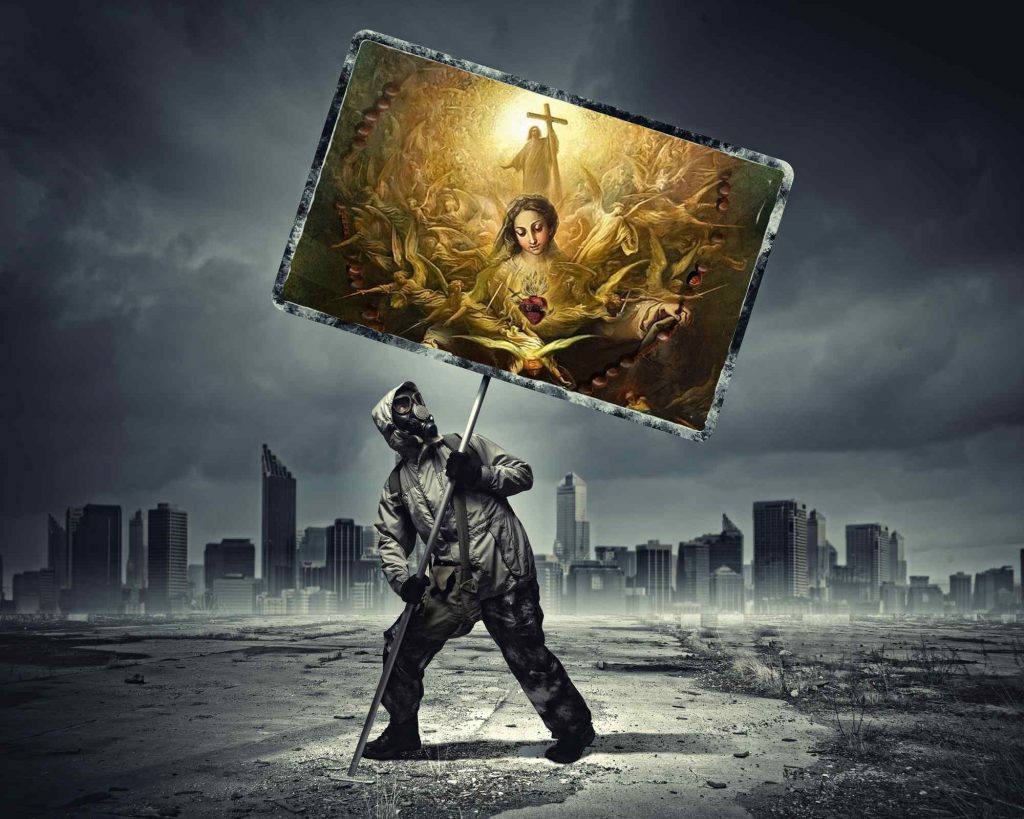
IT’S not every day you get called a heretic.
But it so happens that three men are suggesting just that. I have remained silent about it for the past two years, quietly refuting their charges through numerous writings. But two of these men—Stephen Walford and Emmett O’Regan—have not only attacked my writings as heretical on their blog, in books, or on forums, but have even recently written my bishop in order to have me removed from ministry (which he ignored, and instead, issued me a letter of commendation.) Desmond Birch, a commentator on EWTN, has also taken to Facebook of late to declare that I am promoting “false doctrine.” Why? All three of these men have something in common: they have written books which declare that their interpretation of the “end times” is the correct one.
Our mission as Christians is to help Christ save souls; debating about speculative theories is not, which is why I have not worried too much about their objections until now. I find it somewhat grievous that, at a time when the world is closing in on the Church and so many are being divided by this present pontificate, that we would turn on one another.
I feel a certain obligation to answer what are rather serious public charges, even though most of you are likely not aware of them—yet. It is the wise advice of St. Francis de Sales that, when our “good name” is calumniated by others, we should remain silent and bear it with humility. But he adds, “I except certain persons on whose reputation the edification of many others depends” and by reason “of the scandal it would provoke.”
In that regard, this is a good teaching opportunity. There are hundreds of writings here involving the subject of the “end times” that I will now condense into a single writing. Then I will directly respond to the charges of these men. (Since this will be longer than my usual articles, I will not write anything else until next week to give readers a chance to read this.)
RETHINKING THE “END TIMES”
Aside from a few concrete certainties of the last times, the Church doesn’t have much to say about the details. That’s because Jesus gave us a compressed vision that may or may not span centuries. St. John’s Apocalypse is an enigmatic book that seems to start over just as it’s ending. The apostolic letters, though dripping with anticipation of the Lord’s return, prematurely anticipate it. And the Old Testament prophets speak in highly allegorical language, their words carrying layers of meaning.
But are we really without a compass? If one takes into consideration, not just one or two saints or only the later Church Fathers, but the entire body of Sacred Tradition, a magnificent picture emerges creating a harmonious symphony of hope.  However, for too long, the institutional Church has been unwilling to discuss these issues in any depth, thus leaving them to presumptive speculators. For too long, fear, bias, and politics have swayed reasoned theological development of the eschaton. For too long, rationalism and a disdain for the mystical have thwarted an openness to new prophetic horizons. Thus, it has been mostly fundamentalist radio and television hosts filling the void leaving an impoverished Catholic view of Christ’s greatest triumph.
However, for too long, the institutional Church has been unwilling to discuss these issues in any depth, thus leaving them to presumptive speculators. For too long, fear, bias, and politics have swayed reasoned theological development of the eschaton. For too long, rationalism and a disdain for the mystical have thwarted an openness to new prophetic horizons. Thus, it has been mostly fundamentalist radio and television hosts filling the void leaving an impoverished Catholic view of Christ’s greatest triumph.
The widespread reluctance on the part of many Catholic thinkers to enter into a profound examination of the apocalyptic elements of contemporary life is, I believe, part of the very problem which they seek to avoid. If apocalyptic thinking is left largely to those who have been subjectivized or who have fallen prey to the vertigo of cosmic terror, then the Christian community, indeed the whole human community, is radically impoverished. And that can be measured in terms of lost human souls. –Author, Michael O’Brien, Are We Living In Apocalyptic Times?
Perhaps in light of world events, it is time for the Church to rethink the “end times.” Myself, and others who are on the same page, hope to contribute something of value to that discussion.
A PAPAL REQUEST
Certainly, the popes of the past century haven’t ignored the times we are living in. Far from it. Someone once asked me, “If we are possibly living in the ‘end times,’ then why wouldn’t the popes be shouting this from the rooftops?” In response, I wrote Why Aren’t the Popes Shouting? Clearly, they have been.
Then, in 2002 while addressing the youth, St. John Paul II asked an astonishing thing:
Dear young people, it is up to you to be the watchmen of the morning who announce the coming of the sun who is the Risen Christ! —POPE JOHN PAUL II, Message of the Holy Father to the Youth of the World, XVII World Youth Day, n. 3; (cf. Is 21:11-12)
“The coming of the Risen Christ!” No wonder he called it a “stupendous task”:
The young have shown themselves to be for Rome and for the Church a special gift of the Spirit of God… I did not hesitate to ask them to make a radical choice of faith and life and present them with a stupendous task: to become “morning watchmen” at the dawn of the new millennium. —POPE JOHN PAUL II, Novo Millennio Inuente, n.9, Jan. 6th, 2001
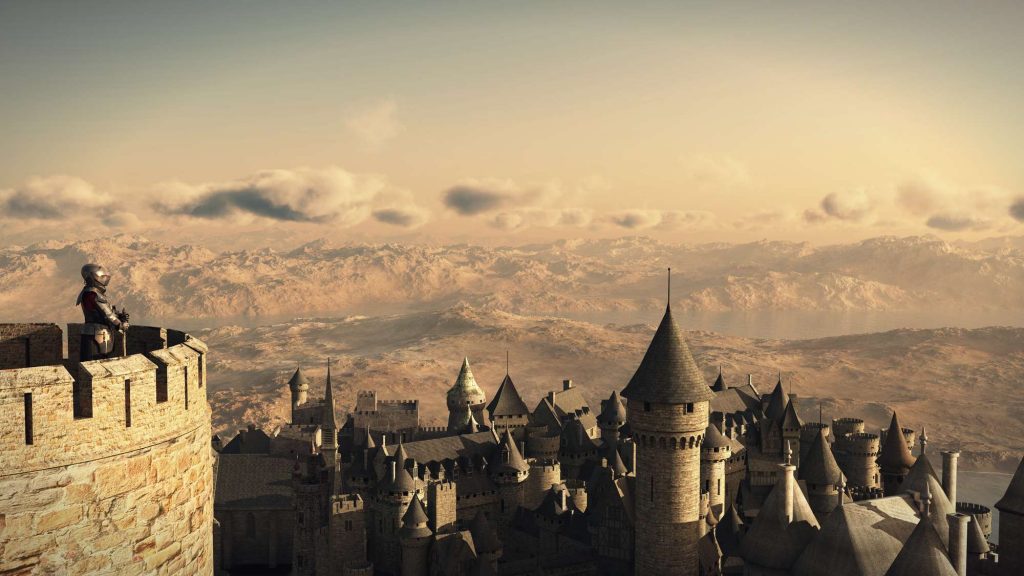
Later, he gave a further crucial insight. The “coming of the Risen Christ” is not the end of the world nor the coming of Jesus in His glorified flesh, but the coming of a new era in Christ:
I would like to renew to you the appeal I made to all the young people… accept the commitment to be morning watchmen at the dawn of the new millennium. This is a primary commitment, which keeps its validity and urgency as we begin this century with unfortunate dark clouds of violence and fear gathering on the horizon. Today, more than ever, we need people who live holy lives, watchmen who proclaim to the world a new dawn of hope, brotherhood and peace. —POPE ST. JOHN PAUL II, “Message of John Paul II to the Guannelli Youth Movement”, April 20th, 2002; vatican.va
Then in 2006, I sensed the Lord invite me to this “task” in a very personal way (see here). With that, and under the spiritual direction of a good priest, I took my place upon the rampart to “watch and pray.”
I will stand at my guard post, and station myself upon the rampart; I will keep watch to see what he will say to me… Then the Lord answered me and said: Write down the vision; make it plain upon tablets, so that the one who reads it may run. For the vision is a witness for the appointed time, a testimony to the end; it will not disappoint. If it delays, wait for it, it will surely come, it will not be late. (Habakkuk 2:1-3)
Before moving on to what I have already made “plain upon tablets” (and iPads, laptops and smartphones), I must be clear about something. Some have mistakenly assumed that when I write that “I sense the Lord saying” or “I sensed in my heart” this or that, etc. that I am a “seer” or “locutionist” who actually sees or audibly hears the Lord. Rather, this is the practice of lectio divina, which is to meditate on the Word of God, listening for the Good Shepherd’s voice. This was the custom from earliest times among the Desert Fathers who produced our monastic traditions. In Russia, this was the practice of the “poustiniks” who, from solitude, would emerge with a “word” from the Lord. In the West, it is simply the fruit of interior prayer and meditation. It’s really all the same thing: dialogue leading to communion.
You will see certain things; give an account of what you see and hear. You will be inspired in your prayers; give an account of what I tell you and of what you will understand in your prayers. —Our Lady to St. Catherine of Labouré, Autograph, February 7th, 1856, Dirvin, Saint Catherine Labouré, Archives of the Daughters of Charity, Paris, France; p.84
WHAT IS THE END GOAL OF SALVATION HISTORY?
What is God’s goal for His people, the Church—the mystical bride of Christ? Sadly, there is a kind of “eschatology of 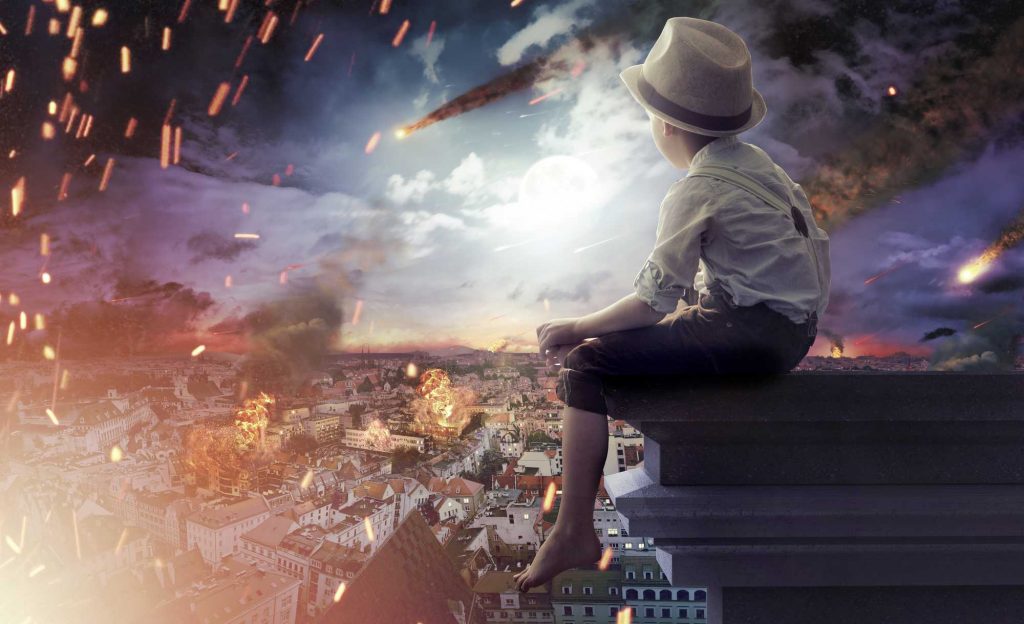 despair” prevalent in our times. The basic idea of some is that things just continually get worse, culminating in the appearance of the Antichrist, then Jesus, and then the end of the world. Others add a brief reprisal of the Church where she grows again in external power after a “chastisement.”
despair” prevalent in our times. The basic idea of some is that things just continually get worse, culminating in the appearance of the Antichrist, then Jesus, and then the end of the world. Others add a brief reprisal of the Church where she grows again in external power after a “chastisement.”
But there is another quite different vision where a new civilization of love emerges in the “end times” as victor over a culture of death. That was certainly Pope St. John XXIII’s vision:
At times we have to listen, much to our regret, to the voices of people who, though burning with zeal, lack a sense of discretion and measure. In this modern age they can see nothing but prevarication and ruin … We feel that we must disagree with those prophets of doom who are always forecasting disaster, as though the end of the world were at hand. In our times, divine Providence is leading us to a new order of human relations which, by human effort and even beyond all expectations, are directed to the fulfilment of God’s superior and inscrutable designs, in which everything, even human setbacks, leads to the greater good of the Church. —POPE ST. JOHN XXIII, Address for the Opening of the Second Vatican Council, October 11th, 1962
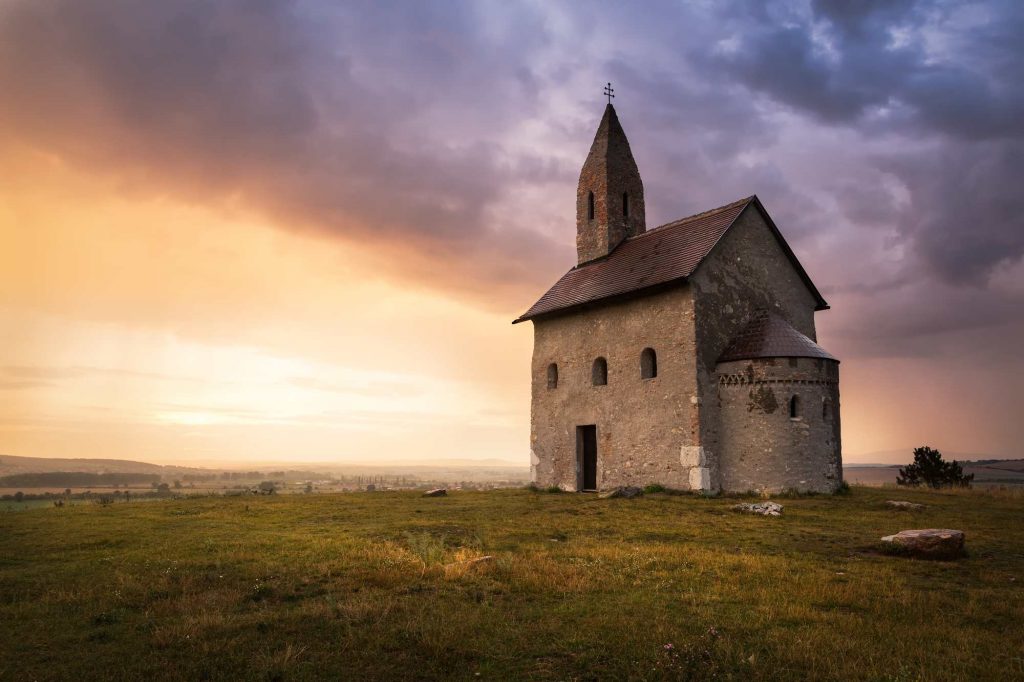 Cardinal Ratzinger held a similar view where, even though the Church would be reduced and stripped, she would become a home again to a broken world.
Cardinal Ratzinger held a similar view where, even though the Church would be reduced and stripped, she would become a home again to a broken world.
…when the trial of this sifting is past, a great power will flow from a more spiritualized and simplified Church. Men in a totally planned world will find themselves unspeakably lonely… [the Church] will enjoy a fresh blossoming and be seen as man’s home, where he will find life and hope beyond death. —Cardinal Joseph Ratzinger (POPE BENEDICT XVI), Faith and Future, Ignatius Press, 2009
When he became pope, he also implored the youth to announce this coming new age:
Empowered by the Spirit, and drawing upon faith’s rich vision, a new generation of Christians is being called to help build a world in which God’s gift of life is welcomed, respected and cherished… A new age in which hope liberates us from the shallowness, apathy, and self-absorption which deaden our souls and poison our relationships. Dear young friends, the Lord is asking you to be prophets of this new age… —POPE BENEDICT XVI, Homily, World Youth Day, Sydney, Australia, July 20th, 2008
A more careful study of St. Paul and St. John reveals something of this vision as well. What they foresaw before the “final  curtain” on human history was a certain perfection that God would accomplish in His Church. Not a definitive state of perfection, which will only be realized in Heaven, but a holiness and sanctity that would, in fact, make her a suitable Bride.
curtain” on human history was a certain perfection that God would accomplish in His Church. Not a definitive state of perfection, which will only be realized in Heaven, but a holiness and sanctity that would, in fact, make her a suitable Bride.
I am a minister in accordance with God’s stewardship given to me to bring to completion for you the word of God, the mystery hidden from ages and from generations past… that we may present everyone perfect in Christ. (Col 1:25,29)
In fact, this was precisely the prayer of Jesus, our high priest:
…that they may all be one, as you, Father, are in me and I in you, that they also may be in us… that they may be brought to perfection as one, that the world may know that you sent me, and that you loved them even as you loved me. (John 17:21-23)
St. Paul saw this mystical journey as a certain “maturing” of the Body of Christ into spiritual “manhood.”
My children, for whom I am again in labor until Christ be formed in you… until we all attain to the unity of faith and knowledge of the Son of God, to mature manhood, to the extent of the full stature of Christ. (Gal 4:19; Eph 4:13)
What does that look like? Enter Mary.
THE MASTERPLAN
…she is the most perfect image of freedom and of the liberation of humanity and of the universe. It is to her as Mother and Model that the Church must look in order to understand in its completeness the meaning of her own mission. —POPE JOHN PAUL II, Redemptoris Mater, n. 37
As Benedict XVI said, the Blessed Mother “became the image of the Church to come.”[1]Spe Salvi, n.50 Our Lady is God’s Masterplan, a template for the Church. When we resemble her, then the work of Redemption will be complete in us. 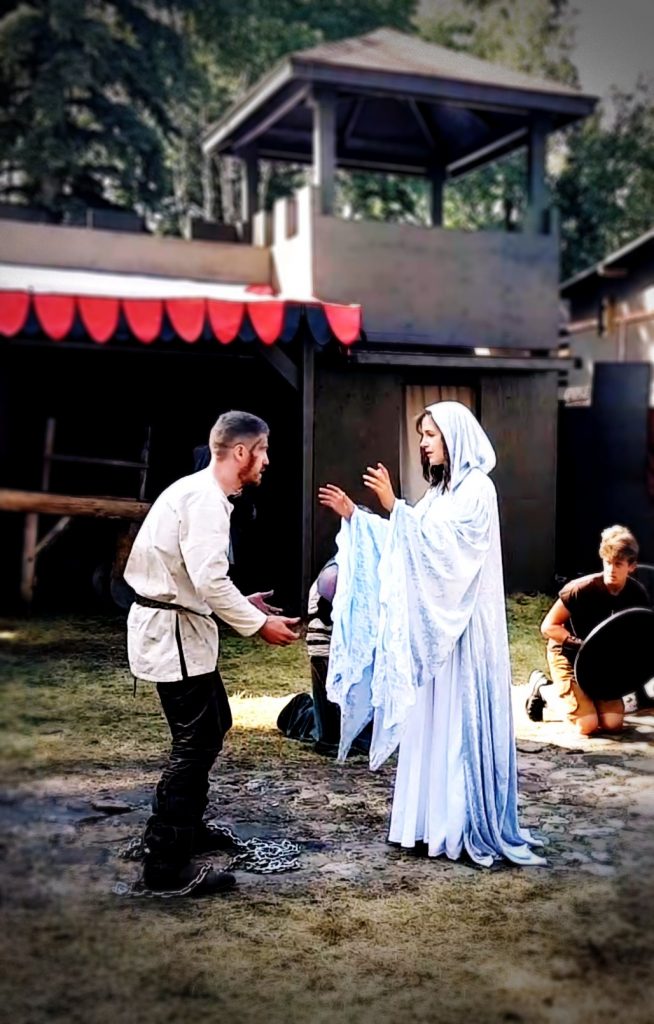
For the mysteries of Jesus are not yet completely perfected and fulfilled. They are complete, indeed, in the person of Jesus, but not in us, who are his members, nor in the Church, which is his mystical body. —St. John Eudes, treatise “On the Kingdom of Jesus”, Liturgy of the Hours, Vol IV, p 559
What will bring the “mysteries of Jesus” to completion in us?
…according to the revelation of the mystery kept secret for long ages but now manifested through the prophetic writings and, according to the command of the eternal God, made known to all nations [it is] to bring about the obedience of faith, to the only wise God, through Jesus Christ be glory forever and ever. Amen. (Rom 16:25-26)
It is when the Church is living again in the Divine Will as God intended, and as Adam and Eve once did, that Redemption will be complete. Hence, Our Lord taught us to pray: “Thy kingdom come, Thy will be done on earth as it is in heaven.“
Hence it follows that to restore all things in Christ and to lead men back to submission to God is one and the same aim. —POPE ST. PIUS X, E Supremi, n. 8
Creation is not groaning for the end of the world! Rather, it is groaning for the restoration of the Divine will in the sons and daughters of the Most High that will restore our right relationship with God and His creation:
For creation awaits with eager expectation the revelation of the children of God… (Romans 8:19)
Creation is the foundation of “all God’s saving plans”… God envisaged the glory of the new creation in Christ. —CCC, 280
Thus, Jesus did not only come to save us, but to restore us and all creation to God’s original plan:
…in Christ is realized the right order of all things, the union of heaven and earth, as God the Father intended from the beginning. It is the obedience of God the Son Incarnate which reestablishes, restores, the original communion of man with God and, therefore, peace in the world. His obedience unites once again all things, ‘things in heaven and things on earth.’ —Cardinal Raymond Burke, speech in Rome; May 18th, 2018, lifesitnews.com
But as said, this divine plan, while fully realized in Jesus Christ, is not yet fully completed in His mystical Body. And thus, neither has that “time of peace” come that many popes have prophetically anticipated.
“All creation,” said St. Paul, “groans and labors up till now,” awaiting Christ’s redemptive efforts to restore the proper relationship between God and his creation. But Christ’s redemptive act did not of itself restore all things, it simply made the work of redemption possible, it began our redemption. Just as all men share in the disobedience of Adam, so all men must share in the obedience of Christ to the Father’s will. Redemption will be complete only when all men share his obedience… —Servant of God Fr. Walter Ciszek, He Leadeth Me (San Francisco: Ignatius Press, 1995), pp. 116-117
Thus, it was Our Lady’s fiat that began this renewal, this resurrection of the Divine Will in God’s People:
She thus initiates the new creation. —POPE ST. JOHN PAUL II, “Mary’s Emnity toward Satan was Absolute”; General Audience, May 29th, 1996; ewtn.com
In the writings of Servant of God Luisa Piccarreta, which have received a certain amount of ecclesial approval thus far, Jesus says:
In Creation, My ideal was to form the Kingdom of My Will in My creature’s soul. My primary purpose was to make each man the image of the Divine Trinity by virtue of the fulfilment of My Will in him. But by man’s withdrawl from My Will, I lost My Kingdom in him, and for 6000 long years I have had to battle. —Jesus to Servant of God Luisa Piccarreta, from Luisa’s diaries, Vol. XIV, November 6th, 1922; Saints in the Divine Will by Fr. Sergio Pellegrini; p. 35; printed with the approval of the Archbishop of Trani, Giovan Battista Pichierri
But now, says St. John Paul II, God is going to restore all things in Christ:
Thus is the full action of the original plan of the Creator delineated: a creation in which God and man, man and woman, humanity and nature are in harmony, in dialogue, in communion. This plan, upset by sin, was taken up in a more wondrous way by Christ, Who is carrying it out mysteriously but effectively in the present reality, in the expectation of bringing it to fulfillment… —POPE JOHN PAUL II, General Audience, February 14, 2001
THE KINGDOM COMES
The word “kingdom” is key to understanding the “end times.” Because what we are really speaking of, according to St. John’s vision in the Apocalypse, is the reign of Christ in a new modality within His Church.[2]cf. Rev 20:106
This is our great hope and our invocation, ‘Your Kingdom come!’—a Kingdom of peace, justice and serenity, which will re-establish the original harmony of creation. —ST. POPE JOHN PAUL II, General Audience, November 6th, 2002, Zenit
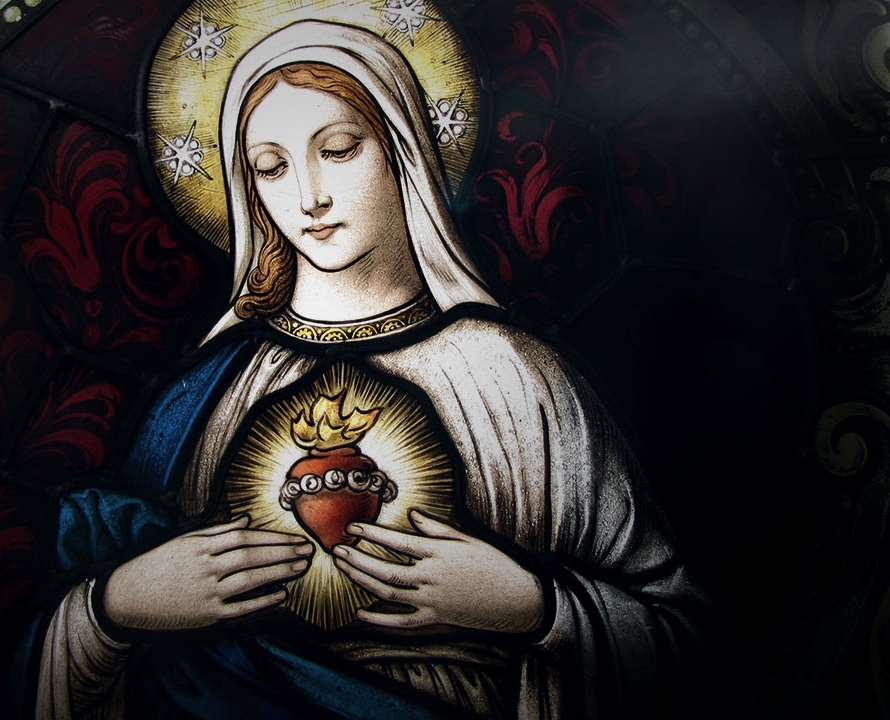 This is what is meant when we speak of the “Triumph of the Immaculate Heart of Mary”: the coming of the Kingdom “of peace, justice and serenity,” not the end of the world.
This is what is meant when we speak of the “Triumph of the Immaculate Heart of Mary”: the coming of the Kingdom “of peace, justice and serenity,” not the end of the world.
I said the “triumph” will draw closer [in the next seven years]. This is equivalent in meaning to our praying for the coming of God’s Kingdom. —Light of the World, p. 166, A Conversation With Peter Seewald (Ignatius Press)
Christ the Lord already reigns through the Church, but all the things of this world are not yet subjected to him… The kingdom has come in the person of Christ and grows mysteriously in the hearts of those incorporated into him, until its full eschatological manifestation. —CCC, n. 865, 860
But we must never confuse this “kingdom” with an earthly utopia, a kind of definitive intra-historical fulfilment of salvation whereby man reaches his destiny within history.
...since the idea of a definitive intra-historical fulfillment fails to take into account the permanent openness of history and of human freedom, for which failure is always a possibility. —Cardinal Ratzinger (POPE BENEDICT XVI) Eschatology: Death and Eternal Life, Catholic University of America Press, p. 213
…Human life will continue, people will continue to learn about successes and failures, moments of glory and stages of decay, and Christ our Lord always will, until the end of time, be the only source of salvation. —POPE JOHN PAUL II, National Conference of Bishops, January 29th, 1996;www.vatican.va
At the same time, the popes have expressed a stirring hope that the world will experience the transforming power of the Gospel before the end that will, at the very least, pacify society for a time.
It is God’s task to bring about this happy hour and to make it known to all… When it does arrive, it will turn out to be a solemn hour, one big with consequences not only for the restoration of the Kingdom of Christ, but for the pacification of… the world. We pray most fervently, and ask others likewise to pray for this much-desired pacification of society. —POPE PIUS XI, Ubi Arcani dei Consilioi “On the Peace of Christ in his Kingdom”, December 23, 1922
But here again, we are not speaking of an earthly kingdom. For Jesus already said:
The coming of the Kingdom of God cannot be observed, and no one will announce, ‘Look, here it is,’ or, ‘There it is.’ For behold, the Kingdom of God is among you. (Luke 17:20-21)
What we are speaking of, then, is a pneumatic coming of Christ through the Holy Spirit—a “new Pentecost.”
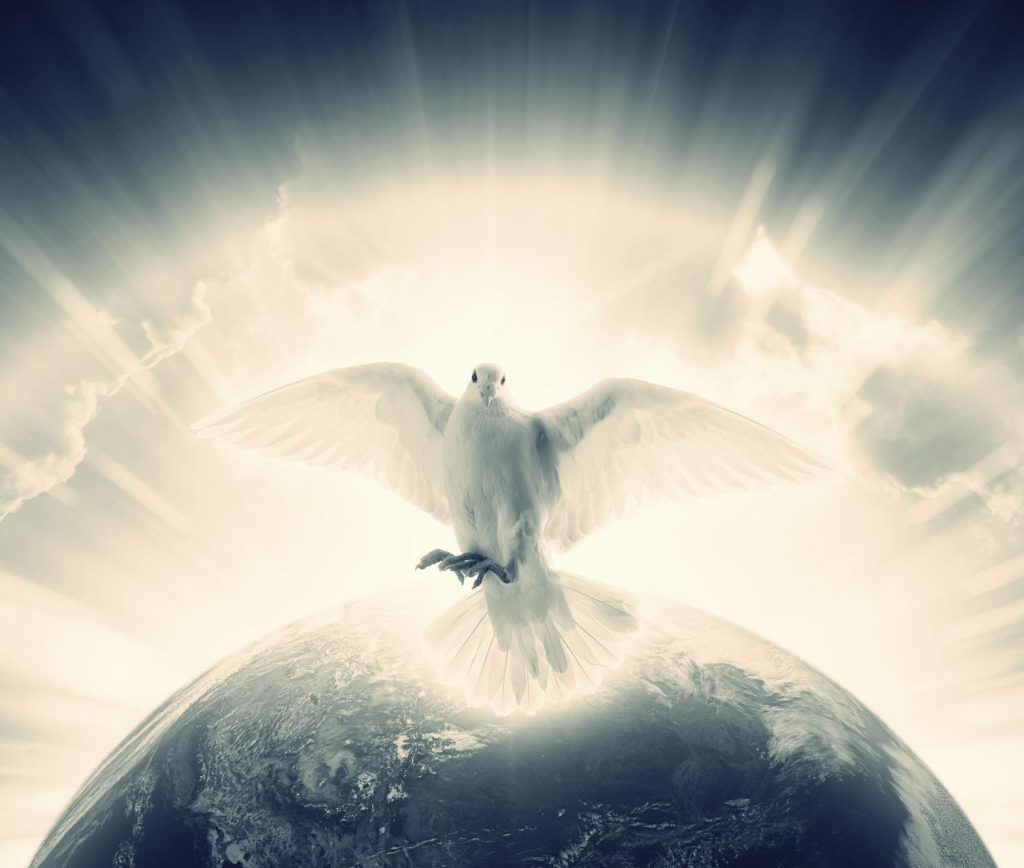
God himself had provided to bring about that “new and divine” holiness with which the Holy Spirit wishes to enrich Christians at the dawn of the third millennium, in order to “make Christ the heart of the world.” —POPE JOHN PAUL II, Address to the Rogationist Fathers, n. 6, www.vatican.va
How could such a grace, then, not impact the entire world? Indeed, Pope St. John XXIII expected this “new and divine” holiness to bring about an era of peace:
The task of humble Pope John is to “prepare for the Lord a perfect people,” which is exactly like the task of the Baptist, who is his patron and from whom he takes his name. And it is not possible to imagine a higher and more precious perfection than that of the triumph of Christian peace, which is peace at heart, peace in the social order, in life, in wellbeing, in mutual respect, and in the brotherhood of nations. —POPE ST. JOHN XXIII, True Christian Peace, December 23rd, 1959; www.catholicculture.org
And it is this “perfection” that St. John foresaw in his vision that “readies” the Bride of Christ for the Wedding Feast of the Lamb.
For the wedding day of the Lamb has come, his bride has made herself ready. She was allowed to wear a bright, clean linen garment. (Rev 19:7-8)
THE ERA OF PEACE
Pope Benedict XVI admitted that, personally, he may be too “rational” to expect “a huge turnaround and that history will suddenly take a totally different course”—at least in the next seven years after he said that. [3]cf. Light of the World, p. 166, A Conversation With Peter Seewald (Ignatius Press But Our Lord and Our Lady and several other popes have been predicting something quite substantial. In the approved apparition at Fatima, she prophesied:
The Holy Father will consecrate Russia to me, and she shall be converted, and a period of peace will be granted to the world. —Our Lady of Fatima, The Message of Fatima, www.vatican.va
Cardinal Mario Luigi Ciappi, papal theologian for Pius XII, John XXIII, Paul VI, John Paul I, and John Paul II said:
Yes, a miracle was promised at Fatima, the greatest miracle in the history of the world, second only to the Resurrection. And that miracle will be an era of peace, which has never really been granted before to the world. —October 9th, 1994, The Apostolate’s Family Catechism, p. 35
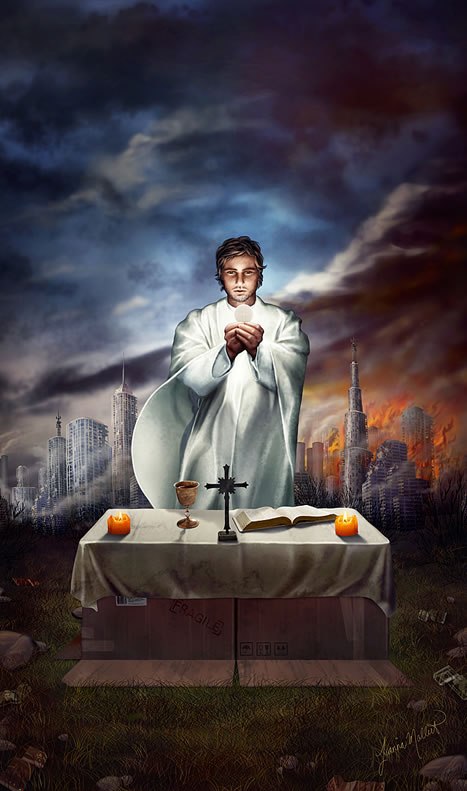 The great Marian saint, Louis de Montfort, echoed this miracle in apocalyptic language:
The great Marian saint, Louis de Montfort, echoed this miracle in apocalyptic language:
We are given reason to believe that, towards the end of time and perhaps sooner than we expect, God will raise up people filled with the Holy Spirit and imbued with the spirit of Mary. Through them Mary, Queen most powerful, will work great wonders in the world, destroying sin and setting up the Kingdom of Jesus her Son upon the ruins of the corrupt kingdom which is this great earthly Babylon. (Rev.18:20) —Treatise on True Devotion to the Blessed Virgin,n. 58-59
Is it not true that your will must be done on earth as it is in heaven? Is it not true that your kingdom must come? Did you not give to some souls, dear to you, a vision of the future renewal of the Church? —St. Louis de Montfort, Prayer for Missionaries, n. 5; www.ewtn.com
One of the souls to whom God gave this vision is Elizabeth Kindelmann of Hungary. In her approved messages, she speaks of the coming of Christ in an interior way. Our Lady stated:
The soft light of my Flame of Love will light up spreading fire over the entire surface of the earth, humiliating Satan rendering him powerless, completely disabled. Do not contribute to prolong the pains of childbirth. —Our Lady to Elizabeth Kindelmann; The Flame of Love of the Immaculate Heart of Mary, “Spiritual Diary”, p. 177; Imprimatur Archbishop Péter Erdö, Primate of Hungary
Here too, in harmony with recent popes, Jesus speaks of a new Pentecost.
…the Spirit of Pentecost will flood the earth with his power and a great miracle will gain the attention of all humanity. This will be the effect of grace of the Flame of Love… which is Jesus Christ himself… something like this has not happened since the Word became flesh. —Jesus to Elizabeth Kindelmann, The Flame of Love, p. 61, 38, 61; 233; from Elizabeth Kindelmann’s diary; 1962; Imprimatur Archbishop Charles Chaput
THE DAY OF THE LORD
Evil may have its hour, but God will have His day.
—Venerable Archbishop Fulton J. Sheen
Clearly, we are not speaking here of the final coming of Jesus in His glorified flesh at the end of time.
Satan’s blindness means the universal triumph of My divine Heart, the liberation of souls, and the opening of the way to salvation to its fullest extent. —Jesus to Elizabeth Kindelmann, The Flame of Love, p. 61, 38, 61; 233; from Elizabeth Kindelmann’s diary; 1962; Imprimatur Archbishop Charles Chapu
Here is the question: Where do we see this breaking of Satan’s power in the Scriptures? In the Book of Revelation. St. John foretells of a period in the future when Satan is “chained” and when Christ will “reign” in His Church throughout the world. 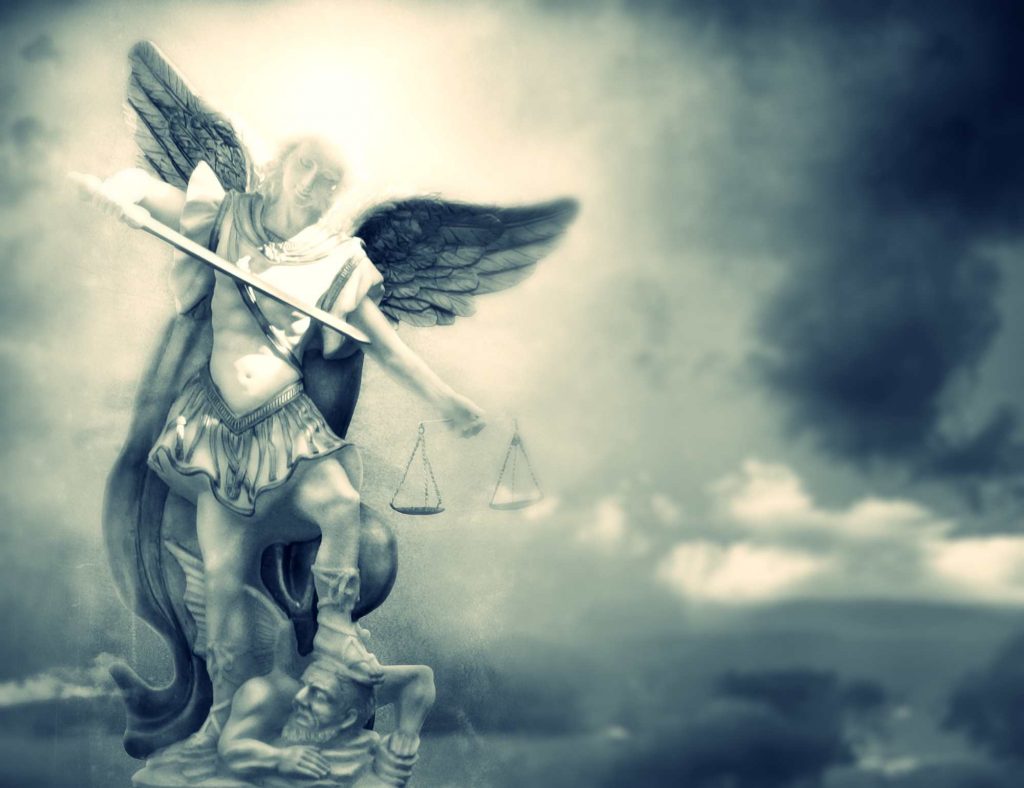 It occurs after the appearance and death of the Antichrist, that “son of perdition” or “lawless one,” that “beast” who is cast into the lake of fire. Afterward, an angel…
It occurs after the appearance and death of the Antichrist, that “son of perdition” or “lawless one,” that “beast” who is cast into the lake of fire. Afterward, an angel…
…seized the dragon, the ancient serpent, which is the Devil or Satan, and tied it up for a thousand years… they will be priests of God and of Christ, and they will reign with him for the thousand years. (Rev 20:1, 6)
The Catholic Church, which is the kingdom of Christ on earth, [is] destined to be spread among all men and all nations… —POPE PIUS XI, Quas Primas, Encyclical, n. 12, Dec. 11th, 1925; cf. Matt 24:14
Now, the Early Church Fathers rightly saw some of the language of St. John as symbolic.
…we understand that a period of one thousand years is indicated in symbolic language. —St. Justin Martyr, Dialogue with Trypho, Ch. 81, The Fathers of the Church, Christian Heritage
More importantly, they saw that period as the “Day of the Lord”.
Behold, the Day of the Lord shall be a thousand years. —Letter of Barnabas, The Fathers of the Church, Ch. 15
Do not ignore this one fact, beloved, that with the Lord one day is like a thousand years and a thousand years like one day. (2 Peter 3:8)
…this day of ours, which is bounded by the rising and the setting of the sun, is a representation of that great day to which the circuit of a thousand years affixes its limits. —Lactantius, Fathers of the Church: The Divine Institutes, Book VII, Chapter 14, Catholic Encyclopedia; www.newadvent.org

That is, they believed that the Day of the Lord:
—begins in the darkness of vigil (a period of lawlessness and apostasy)
—crescendoes in darkness (the appearance of the “lawless one” or “Antichrist”)
—is followed by the break of dawn (the chaining of Satan and death of Antichrist)
—is followed by the noon-time (an era of peace)
—until the setting of the sun (the rise of Gog and Magog and a final assault on the Church).
But the sun doesn’t set. That’s when Jesus comes to cast Satan into Hell and judge those living and the dead.[4]cf. Rev 20-12-1 That is the clear chronological reading of Revelation 19-20, and precisely how the Early Church Fathers understood the “thousand years.” They taught, based on what St. John told his followers, that this period would inaugurate a kind of “sabbath rest” for the Church and a reordering of creation.
But when The Antichrist shall have devastated all things in this world, he will reign for three years and six months, and sit in the temple at Jerusalem; and then the Lord will come from Heaven in the clouds… sending this man and those who follow him into the lake of fire; but bringing in for the righteous the times of the kingdom, that is, the rest, the hallowed seventh day… These are to take place in the times of the kingdom, that is, upon the seventh day… the true Sabbath of the righteous. —St. Irenaeus of Lyons, Church Father (140–202 A.D.); Adversus Haereses, Irenaeus of Lyons, V.33.3.4,The Fathers of the Church, CIMA Publishing Co.
Therefore, a sabbath rest still remains for the people of God. (Hebrews 4:9)
…His Son will come and destroy the time of the lawless one and judge the godless, and change the sun and the moon and the stars—then He shall indeed rest on the seventh day… after giving rest to all things, I will make the beginning of the eighth day, that is, the beginning of another world. —Letter of Barnabas (70-79 A.D.), written by a second century Apostolic Father
Those who saw John, the Lord’s disciple, [tell us] that they heard from him how the Lord taught and spoke about these times… —St. Irenaeus of Lyons, Ibid.
THE MIDDLE COMING
Classicaly, the Church has always understood the “second coming” to refer to Jesus’ final return in glory. However, the Magisterium has never rejected the notion of Christ triumphing in His Church beforehand:
…a hope in some mighty triumph of Christ here on earth before the final consummation of all things. Such an occurrence is not excluded, is not impossible, it is not all certain that there will not be a prolonged period of triumphant Christianity before the end. —The Teaching of the Catholic Church: A Summary of Catholic Doctrine, London Burns Oates & Washbourne, p. 1140
In fact, Pope Benedict goes so far as to call it a “coming” of Christ:
Whereas people had previously spoken only of a twofold coming of Christ—once in Bethlehem and again at the end of time—Saint Bernard of Clairvaux spoke of an adventus medius, an intermediate coming, thanks to which he periodically renews His intervention in history. I believe that Bernard’s distinction strikes just the right note… —POPE BENEDICT XVI, Light of the World, p.182-183, A Conversation With Peter Seewald
Indeed, St. Bernard spoke of a “middle coming” of Christ between His birth and final coming. 
Because this [middle] coming lies between the other two, it is like a road on which we travel from the first coming to the last. In the first, Christ was our redemption; in the last, he will appear as our life; in this middle coming, he is our rest and consolation.…. In his first coming Our Lord came in our flesh and in our weakness; in this middle coming he comes in spirit and power; in the final coming he will be seen in glory and majesty… —St. Bernard, Liturgy of the Hours, Vol I, p. 169
But what about that Scripture where St. Paul describes Christ destroying the “lawless one”? Is that not, then, the end of the world?
And then that wicked one shall be revealed whom the Lord Jesus shall kill with the spirit of his mouth; and shall destroy with the brightness of his coming…(2 Thessalonians 2:8)
It’s not the “end” according to St. John and several Church Fathers.
St. Thomas and St. John Chrysostom explain the words quem Dominus Jesus destruet illustratione adventus sui (“whom the Lord Jesus will destroy with the brightness of His coming”) in the sense that Christ will strike the Antichrist by dazzling him with a brightness that will be like an omen and sign of His Second Coming… The most authoritative view, and the one that appears to be most in harmony with Holy Scripture, is that, after the fall of the Antichrist, the Catholic Church will once again enter upon a period of prosperity and triumph. —The End of the Present World and the Mysteries of the Future Life, Fr. Charles Arminjon (1824-1885), p. 56-57; Sophia Institute Press
The Scriptures speak of a “manifestation” of Christ’s “spirit,” not a return in the flesh. Here again is a view that is consonant with the Church Fathers, a plain reading of St. John’s chronology, and the expectation of so many popes: it is  not the end of the world that is coming, but the end of an era. And neither does this view necessarily suggest that there cannot be a “final” antichrist at the very end of the world. As Pope Benedict points out:
not the end of the world that is coming, but the end of an era. And neither does this view necessarily suggest that there cannot be a “final” antichrist at the very end of the world. As Pope Benedict points out:
As far as the antichrist is concerned, we have seen that in the New Testament he always assumes the lineaments of contemporary history. He cannot be restricted to any single individual. One and the same he wears many masks in each generation. —Cardinal Ratzinger (POPE BENEDICT XVI), Dogmatic Theology, Eschatology 9, Johann Auer and Joseph Ratzinger, 1988, p. 199-200
Here again are the Church Fathers:
Before the end of the thousand years the devil shall be loosed afresh and shall assemble all the pagan nations to make war against the holy city… “Then the last anger of God shall come upon the nations, and shall utterly destroy them” and the world shall go down in a great conflagration. —4th century Ecclesiastical writer, Lactantius, “The Divine Institutes”, The ante-Nicene Fathers, Vol 7, p. 211
We shall indeed be able to interpret the words, “The priest of God and of Christ shall reign with Him a thousand years; and when the thousand years shall be finished, Satan shall be loosed out of his prison;” for thus they signify that the reign of the saints and the bondage of the devil shall cease simultaneously… so in the end they shall go out who do not belong to Christ, but to that last Antichrist… —St. Augustine, The Anti-Nicene Fathers, City of God, Book XX, Chap. 13, 19
THY KINGDOM COME
And thus, said Pope Benedict:
Why not ask him to send us new witnesses of his presence today, in whom he himself will come to us? And this prayer, while it is not directly focused on the end of the world, is nevertheless a real prayer for his coming; it contains the full breadth of the prayer that he himself taught us: “Your kingdom come!” Come, Lord Jesus!” —POPE BENEDICT XVI, Jesus of Nazareth, Holy Week: From the Entrance into Jerusalem to the Resurrection, p. 292, Ignatius Press
That was most certainly his predecessor’s expectation who believed that humanity…
…has now entered its final phase, making a qualitative leap, so to speak. The horizon of a new relationship with God is unfolding for humanity, marked by the great offer of salvation in Christ. —POPE JOHN PAUL II, General Audience, April 22nd, 1998
And we hear today the groaning as no one has ever heard it before… Pope [John Paul II] does indeed cherish a great expectation that the millennium of divisions will be followed by a millennium of unifications. —Cardinal Joseph Ratzinger (BENEDICT XVI), Salt of the Earth (San Francisco: Ignatius Press, 1997), translated by Adrian Walker
Pope Pius XII also carried the expectation that, before the end of human history, Christ would triumph in His Bride by 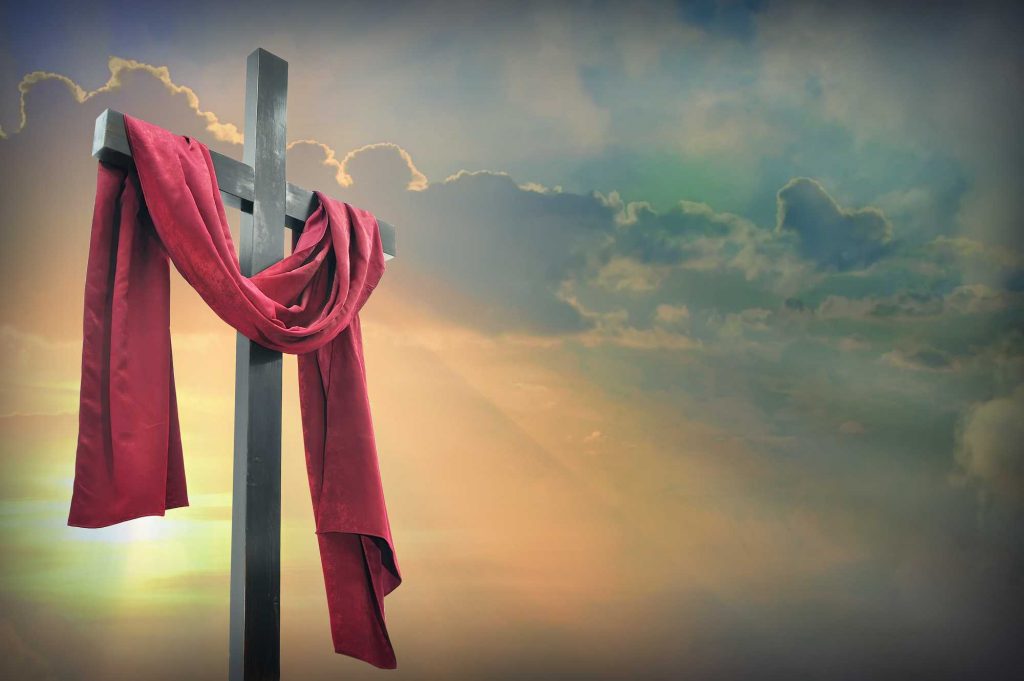 purifying her of sin:
purifying her of sin:
But even this night in the world shows clear signs of a dawn that will come, of a new day receiving the kiss of a new and more resplendent sun… A new resurrection of Jesus is necessary: a true resurrection, which admits no more lordship of death… In individuals, Christ must destroy the night of mortal sin with the dawn of grace regained. In families, the night of indifference and coolness must give way to the sun of love. In factories, in cities, in nations, in lands of misunderstanding and hatred the night must grow bright as the day, nox sicut dies illuminabitur, and strife will cease and there will be peace. —POPE PIUX XII, Urbi et Orbi address,March 2nd, 1957; vatican.va
Note, he sees this “dawn of grace regained” —that communion in the Divine Will that was lost in the Garden of Eden—as being restored “in factories, in cities,” and so forth. Unless there are going to be billowing factories in Heaven, this is no doubt a vision of a triumphant era of peace within history, such as Pope St. Pius X also foresaw:
Oh! when in every city and village the law of the Lord is faithfully observed, when respect is shown for sacred things, when the Sacraments are frequented, and the ordinances of Christian life fulfilled, there will certainly be no more need for us to labor further to see all things restored in Christ. Nor is it for the attainment of eternal welfare alone that this will be of service—it will also contribute largely to temporal welfare and the advantage of human society… Then, at last, it will be clear to all that the Church, such as it was instituted by Christ, must enjoy full and entire liberty and independence from all foreign dominion… For it continues to be true that “piety is useful for all things” (I. Tim. iv., 8) – when this is strong and flourishing “the people will” truly “sit in the fullness of peace” (Is. xxxii., 18). —
A TIME OF PEACE
Notably, St. Pius X references the prophet Isaiah and his vision of a coming era of peace:
My people will live in peaceful country, in secure dwellings and quiet resting places… (Isaiah 32:18)
In fact, Isaiah’s era of peace follows exactly the same chronology as St. John who described Christ’s judgment of the living 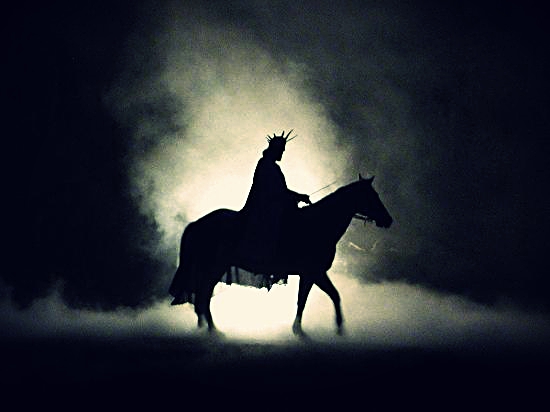 before the era as such:
before the era as such:
Out of his mouth came a sharp sword to strike the nations. He will rule them with an iron rod, and he himself will tread out in the wine press the wine of the fury and wrath of God the almighty (Revelation 19:15)
Compare to Isaiah:
He shall strike the ruthless with the rod of his mouth, and with the breath of his lips he shall slay the wicked… Then the wolf shall be a guest of the lamb, and the leopard shall lie down with the young goat… They shall not harm or destroy on all my holy mountain; for the earth shall be filled with knowledge of the Lord, as water covers the sea. (cf. Isaiah 11:4-9)
Nearly all the popes of the past century foresaw an hour when Christ and His Church would become the heart of the world. Isn’t this what Jesus said would occur?
This gospel of the kingdom will be preached throughout the world as a witness to all nations, and then the end will come. (Matthew 24:14)
Not surprisingly, the popes have been lockstep with the Early Church Fathers and the Scriptures alike. Pope Leo XIII seemed to be speaking for all of them when he said:
We have attempted and persistently carried out during a long pontificate towards two chief ends: in the first place, towards the restoration, both in rulers and peoples, of the principles of the Christian life in civil and domestic society, since there is no true life for men except from Christ; and, secondly, to promote the reunion of those who have fallen away from the Catholic Church either by heresy or by schism, since it is most undoubtedly the will of Christ that all should be united in one flock under one Shepherd. —Divinum Illud Munus, n. 10
The unity of the world will be. The dignity of the human person shall be recognized not only formally but effectively… Neither selfishness, nor arrogance, nor poverty… [shall] prevent the establishment of a true human order, a common good, a new civilization. —POPE PAUL VI, Urbi et Orbi Message, April 4th, 1971
There are so many Scriptures that support what the popes are saying in the books of Isaiah, Ezekiel, Daniel, Zechariah, Malachi, the Psalms and so forth. One that encapsulates it best, perhaps, is the third chapter of Zephaniah that speaks of the “Day of the Lord” that follows a judgment of the living.
For in the fire of my passion all the earth will be consumed. For then I will make pure the speech of the peoples… I will leave as a remnant in your midst a people humble and lowly, who shall take refuge in the name of the Lord… they shall pasture and lie down with none to disturb them. Shout for joy, daughter Zion! Sing joyfully, Israel! …The Lord, your God, is in your midst, a mighty savior, who will rejoice over you with gladness, and renew you in his love… At that time I will deal with all who oppress you… At that time I will bring you home, and at that time I will gather you; for I will give you renown and praise, among all the peoples of the earth, when I bring about your restoration before your very eyes, says the Lord. (3:8-20)
St. Peter no doubt had that Scripture in mind when he preached:
Repent, therefore, and be converted, that your sins may be wiped away, and that the Lord may grant you times of refreshment and send you the Messiah already appointed for you, Jesus, whom heaven must receive until the times of universal restoration of which God spoke through the mouth of his holy prophets from of old. (Acts 3:19-20)
Blessed are the meek, for they will inherit the land. (Matthew 5:5)
THE OBJECTIONS
- The Era of Peace is millenarianism
Stephen Walford and Emmett O’Regan insist that what I have summarized above is nothing short of the heresy of millenarianism. That heresy reared itself in the early Church when the Jewish converts expected that Jesus would return in the flesh to reign on earth for a literal thousand years among the risen martyrs. Those saints, as St. Augustine explains, “then rise again [to] enjoy the leisure of immoderate carnal banquets, furnished with an amount of meat and drink such as not only to shock the feeling of the temperate, but even to surpass the measure of credulity itself.” [5]City of God, Bk. XX, Ch. 7 Later more mitigated versions of this heresy appeared that dispensed with the indulgences, but always held that Jesus would still return to earth to reign in the flesh.
Leo J. Trese in The Faith Explained states:
Those who do take [Rev 20:1-6] literally and believe that Jesus will come to reign upon earth for a thousand years before the end of the world are called millenarists. —p. 153-154, Sinag-Tala Publishers, Inc. (with the Nihil Obstat and Imprimatur)
Thus, the Catechism of the Catholic Church declares:
The Antichrist’s deception already begins to take shape in the world every time the claim is made to realize within history that messianic hope which can only be realized beyond history through the eschatological judgment. The Church has rejected even modified forms of this falsification of the kingdom to come under the name of millenarianism (577), especially the “intrinsically perverse” political form of a secular messianism. —n. 676
Footnote 577 above leads us to Denzinger-Schonnmetzer’s work (Enchiridion Symbolorum, definitionum et declarationum de rebus fidei et morum,) which traces the development of doctrine and dogma in the Catholic Church from its earliest times:
…the system of mitigated Millenarianism, which teaches, for example, that Christ the Lord before the final judgment, whether or not preceded by the resurrection of the many just, will come visibly to rule over this world. The answer is: The system of mitigated Millenarianism cannot be taught safely. —DS 2296/3839, Decree of the Holy Office, July 21, 1944
To sum up, Jesus is not coming to visibly reign on earth before the end of human history.
However, Mr. Walford and Mr. O’Regan appear to insist that any kind of notion that the “thousand years” refers to a future period of peace is a heresy. On the contrary, the scriptural foundation of an historic and universal era of peace, as opposed to millenarianism, was presented by Fr. Martino Penasa directly to the Congregation for the Doctrine of the Faith (CDF). His question was: “È imminente una nuova era di vita cristiana?” (“Is a new era of Christian life imminent?”). The Prefect at that time, Cardinal Joseph Ratzinger, replied, “La questione è ancora aperta alla libera discussione, giacchè la Santa Sede non si è ancora pronunciata in modo definitivo”:
The question is still open to free discussion, as the Holy See has not made any definitive pronouncement in this regard. —Il Segno del Soprannauturale, Udine, Italia, n. 30, p. 10, Ott. 1990; Fr. Martino Penasa presented this question of a “millenary reign” to Cardinal Ratzinger
Even with that, Walford, O’Regan and Birch insist that the only acceptable interpretation of the “thousand years” is the one St. Augustine gave that is the one we hear most frequently repeated today:
…so far as occurs to me… [St. John] used the thousand years as an equivalent for the whole duration of this world, employing the number of perfection to mark the fullness of time. —St. Augustine of Hippo (354-430) A.D., De Civitate Dei “City of God”, Book 20, Ch. 7
However, this is one of several interpretations the saint gave, and most notably, he declares it—not as a dogma—but as his personal opinion: “so far as occurs to me.” Indeed, the Church has never declared this to be a doctrine: “The question is still open to free discussion.” In fact, Augustine actually supports the teachings of the Early Church Fathers and the possibility of a “new era of Christian life” so long as it is spiritual in nature:
…as if it were a fit thing that the saints should thus enjoy a kind of Sabbath-rest during that period [of a “thousand years”]… And this opinion would not be objectionable, if it were believed that the joys of the saints, in that Sabbath, shall be spiritual, and consequent on the presence of God… —St. Augustine of Hippo (354-430 A.D.; Church Doctor), De Civitate Dei, Bk. XX, Ch. 7, Catholic University of America Press
His Eucharistic presence.
If before that final end there is to be a period, more or less prolonged, of triumphant sanctity, such a result will be brought about not by the apparition of the person of Christ in Majesty but by the operation of those powers of sanctification which are now at work, the Holy Ghost and the Sacraments of the Church. —The Teaching of the Catholic Church: A Summary of Catholic Doctrine (London: Burns Oates & Washbourne, 1952), p. 1140
Last, Mr. Walford and Mr. O’Regan point out the case of Orthodox seer, Vassula Ryden, whose writings many years ago were put on notification by the Vatican. One of the reasons was this:
These alleged revelations predict an imminent period when the Antichrist will prevail in the Church. In millenarian style, it is prophesied that God is going to make a final glorious intervention which will initiate on earth, even before Christ’s definitive coming, an era of peace and universal prosperity. —from Notification on the Writings and Activities of Mrs. Vassula Ryden, www.vatican.va
And so, the Vatican invited Vassula to respond to five questions, one of them on this question of an “era of peace.” At the behest of Cardinal Ratzinger, the questions were submitted to Vassula by Fr. Prospero Grech, a renowned professor of Biblical theology at the Pontifical Institute Augustinianum. On reviewing her answers (one, which answered the question of an “era of peace” according to the same non-millenarianist perspective I’ve laid out above), Fr. Prospero called them “excellent.” More significantly, Cardinal Ratzinger himself had a personal exchange with theologian Niels Christian Hvidt who has carefully documented the follow-up between the CDF and Vassula. He said to Hvidt after Mass one day: “Ah, Vassula has replied very well!”[6]cf. “Dialogue between Vassula Ryden and the CDF” and the attached report by Niels Christian Hvidt Still, the Notification against her writings remained in effect. As one insider in the CDF stated to Hvidt: “The millstones grind slowly in the Vatican.” Hinting at internal divisions, Cardinal Ratzinger later relayed to Hvidt that He “would like to see a new Notification” but that he had to “obey the cardinals.”[7]cf. www.cdf-tlig.org
Despite the internal politics in the CDF, in 2005, the writings of Vassula were granted the Magisterium’s official seals of approval. The Imprimatur and the Nihil Obstat were imparted, respectively, on November 28, 2005 by His Excellency Bishop Felix Toppo, S.J., D.D., and on November 28, 2005 by His Excellency Archbishop Ramon C. Arguelles, STL, DD.[8]According to Canon Law 824 §1: “Unless it is established otherwise, the local ordinary whose permission or approval to publish books must be sought according to the canons of this title is the proper local ordinary of the author or the ordinary of the place where the books are published.”
Then in 2007, the CDF, while not removing the Notification, left discretion to local bishops in light of her clarifications:
From a normative point of view therefore, following the aforementioned clarifications [from Vassula], a case by case prudential judgment is required in view of the real possibility of the faithful being able to read the writings in the light of the said clarifications. —Letter to the Presidents of the Episcopal Conference, William Cardinal Levada, January 25th, 2007
2. The “error” of the Antichrist
In a dialogue with Desmond Birch on Facebook that subsequently has disappeared, he asserted that I am in “error” and promoting “false doctrine” for having said that the appearance of the “Antichrist” could be, in his words, “imminent.” Here is what I wrote three years ago in Antichrist in Our Times:
Brothers and sisters, while the timing of the appearance of the “lawless one” is unknown to us, I feel compelled to continue writing about some rapidly emerging signs that the times of Antichrist may be drawing nearer, and sooner than many think.
I absolutely stand by those words, in part, because I took my cue from the popes themselves. In a Papal Encyclical in 1903, Pope St. Pius X, seeing the foundations of an atheistic and morally relativistic society already in place, penned these words:
Who can fail to see that society is at the present time, more than in any past age, suffering from a terrible and deep-rooted malady which, developing every day and eating into its inmost being, is dragging it to destruction? You understand, Venerable Brethren, what this disease is—apostasy from God… When all this is considered there is good reason to fear lest this great perversity may be as it were a foretaste, and perhaps the beginning of those evils which are reserved for the last days; and that there may be already in the world the “Son of Perdition” of whom the Apostle speaks. —POPE ST. PIUS X, E Supremi, Encyclical On the Restoration of All Things in Christ, n. 3, 5; October 4th, 1903
Then in 1976, two years before being elected Pope John Paul II, Cardinal Wojtyla addressed the bishops of America. These were his words, recorded in the Washington Post, and confirmed by Deacon Keith Fournier who was in attendance:
We are now standing in the face of the greatest historical confrontation humanity has ever experienced. We are now facing the final confrontation between the Church and the anti-church, between the Gospel and the anti-gospel, between Christ and the antichrist. —Eucharistic Congress for the bicentennial celebration of the signing of the Declaration of Independence, Philadelphia, PA, 1976; cf. Catholic Online
It seems then, according to Mr. Birch, that they too are promoting “false doctrine.”
The reason is that Mr. Birch insists that the Antichrist cannot possibly be on earth since the Gospel must first “be preached throughout the world as a witness to all nations, and then the end will come.” [9]Matthew 24:14 His personal interpretation places the Antichrist at the very end of time, again, rejecting St. John’s clear chronology. On the contrary, we read that the Antichrist, the “beast”, is already in the “lake of fire” when the final uprising of “Gog and Magog” takes place (cf. Rev 20:10).
English theologian Peter Bannister, who has studied both the early Church Fathers and some 15,000 pages of credible private revelation since 1970, agrees that the Church must begin to rethink the end times. The rejection of an era of peace (amillennialism), he says, is no longer tenable.
…I am now thoroughly convinced that amillennialism is not only not dogmatically binding but actually a huge mistake (like most attempts throughout history to sustain theological arguments, however sophisticated, that fly in the face of a plain reading of Scripture, in this case Revelation 19 and 20). Perhaps the question really didn’t matter all that much in previous centuries, but it certainly does now… I cannot point to a single credible [prophetic] source that upholds Augustine’s eschatology. Everywhere it is rather affirmed that what we are facing sooner rather than later is the Coming of the Lord (understood in the sense of a dramatic manifestation of Christ, not in the condemned millenarian sense of a physical return of Jesus to rule bodily over a temporal kingdom) for the world’s renewal—not for the Final Judgment/end of the planet…. The logical implication on the basis of Scripture of stating that the Coming of the Lord is ‘imminent’ is that, so too, is the coming of the Son of Perdition. I don’t see any way whatsoever around this. Again, this is confirmed in an impressive number of heavyweight prophetic sources… —personal communication
The problem lies in the assumption that the “Day of the Lord” is the last 24 hour day on earth. That is not what the Church Fathers taught, who again, referred to that Day as the span of a “thousand years.” In that regard, the Church Fathers were echoing St. Paul:
Let no one deceive you in any way; for that Day will not come, unless the rebellion comes first, and the man of lawlessness is revealed, the son of perdition… (2 Thessalonians 2:3)
Moreover, it seems almost careless to insist that the Antichrist could not possibly make an appearance in our day, given the signs of the times all around us and the clear warnings of the popes to the contrary.
The greatest apostasy since the birth of the Church is clearly far advanced all around us. —Dr. Ralph Martin, Consultor to the Pontifical Council for Promoting the New Evangelization; The Catholic Church at the End of Age: What is the Spirit Saying? p. 292
Popular American writer Msgr. Charles Pope asks:
Where are we now in an eschatological sense? It is arguable that we are in the midst of the rebellion and that in fact a strong delusion has come upon many, many people. It is this delusion and rebellion that foreshadows what will happen next: and the man of lawlessness will be revealed. —article, Msgr. Charles Pope, “Are These the Outer Bands of a Coming Judgment?”, November 11th, 2014; blog
Look, we could be wrong. I think we want to be wrong. But one of the early Doctors of the Church had some good advice:
The Church now charges you before the Living God; she declares to you the things concerning Antichrist before they arrive. Whether they will happen in your time we know not, or whether they will happen after you we know not; but it is well that, knowing these things, you should make yourself secure beforehand. —St. Cyril of Jerusalem (c. 315-386) Doctor of the Church, Catechetical Lectures, Lecture XV, n.9
In closing, I wish to say that I am not the final arbiter of anything I or someone else has written—the Magisterium is. I only ask that we remain open to dialogue and avoid rash judgments against each other and against the prophetic voice of Our Lord and Lady in these times. My interest is not in becoming an “end times” expert, but in being faithful to St. John Paul II’s call to announce the coming “dawn.” To be faithful in preparing souls to meet their Lord, whether it is in the natural course of their lives or at the coming of our Lord Jesus Christ.
The Spirit and the Bride say, “Come.” And let him who hears say, “Come.” (Revelation 22:17)
Yes, come Lord Jesus!

RELATED READING
Millenarianism—What it is, and is Not
Dear Holy Father… He is Coming!
The Coming New and Divine Holiness
To journey with Mark in The Now Word,
click on the banner below to subscribe.
Your email will not be shared with anyone.
Footnotes
| ↑1 | Spe Salvi, n.50 |
|---|---|
| ↑2 | cf. Rev 20:106 |
| ↑3 | cf. Light of the World, p. 166, A Conversation With Peter Seewald (Ignatius Press |
| ↑4 | cf. Rev 20-12-1 |
| ↑5 | City of God, Bk. XX, Ch. 7 |
| ↑6 | cf. “Dialogue between Vassula Ryden and the CDF” and the attached report by Niels Christian Hvidt |
| ↑7 | cf. www.cdf-tlig.org |
| ↑8 | According to Canon Law 824 §1: “Unless it is established otherwise, the local ordinary whose permission or approval to publish books must be sought according to the canons of this title is the proper local ordinary of the author or the ordinary of the place where the books are published.” |
| ↑9 | Matthew 24:14 |


